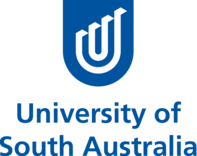
This role has a high level of AI exposure. While some human skills are required, many tasks could be automated or replaced by new technology.
Explore all careersA Science Journalist reports on scientific research and discoveries, conducting interviews and creating engaging content for various media outlets.
Get qualified to work as a Science Journalist with a course recognised across Australia. Speak to a training provider to learn more.



The weekly salary for a Science Journalist in Australia is approximately $1,337.50, which translates to an annual salary range of $70,000 to $90,000. Increase your earning capacity by gaining formal qualifications in professional writing and specialist qualifications in a key area of science (eg, environmental science, ecology, genetics, astrophysics, medical science).
 Courses.com.au Team
Courses.com.au Team
There are no clear employment figures for Science Journalists working in Australia at this time. They are employed by advertising and marketing firms as well as universities, media outlets, newspapers, magazines and scientific journals. Many Science Journalists work freelance.
 Courses.com.au Team
Courses.com.au Team
To become a Science Journalist you will need to have professional-level writing skills and the ability to describe complex scientific theories, experiments, and discoveries in clear, everyday language. Get started with a Diploma of Professional Writing and Editing plus a Bachelor of Science with specialist majors.
Source: Australian Government Labour Market Insights 2023
 Courses.com.au Team
Courses.com.au Team
Browse occupations related to Science Journalist



If you are considering a career as a Science Journalist in Wollongong, you will find a selection of comprehensive courses designed to enhance your skills and knowledge in this exciting field. Our collection of Science Journalist courses in Wollongong includes advanced programs tailored for experienced learners. With options like the Bachelor of Journalism and the Bachelor of Media and Communication, aspiring Science Journalists can gain the expertise needed to communicate complex scientific topics effectively.
TAFE NSW offers the Diploma of Screen and Media (Journalism), a course that equips you with the practical skills required in multimedia journalism. By enrolling in this course, you will learn how to report on significant scientific developments and engage diverse audiences, making it an invaluable choice for future Science Journalists. Additionally, TAFE NSW has an excellent reputation for promoting industry-relevant training in Wollongong.
For those keen on exploring various roles within the journalism sphere, the Science Journalist courses in Wollongong can serve as a stepping stone to many related job opportunities. Graduates can consider pursuing careers as Journalists, Editors, or even Technical Writers, among others. These roles allow for the critical dissemination of scientific information to a broad audience, thus playing a vital part in public understanding of science.
The vibrant Wollongong area not only offers excellent educational opportunities but also supports a dynamic media landscape. By engaging in the Science Journalist courses available, you will be well-positioned to thrive in a variety of related fields. For example, the skills learned can be applicable for Content Writers and Freelance Writers. Moreover, the knowledge gained from these courses can set you apart in competitive roles such as Advertising Copywriters and News Reporters.
Embarking on a course in Science Journalism in Wollongong not only opens up the door to a fulfilling career but also contributes to an informed society. By equipping yourself with the right skills and building a network through established training providers like TAFE NSW and Macquarie University, you can ensure a successful transition into the world of journalism. Start your journey now by exploring the Science Journalist courses in Wollongong that best match your aspirations and unlock your potential in the captivating realm of science communication.